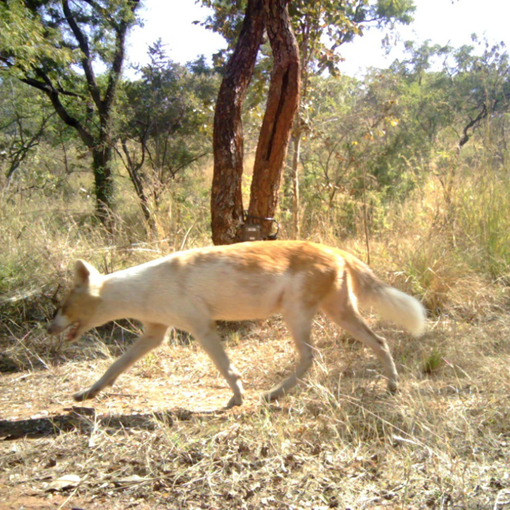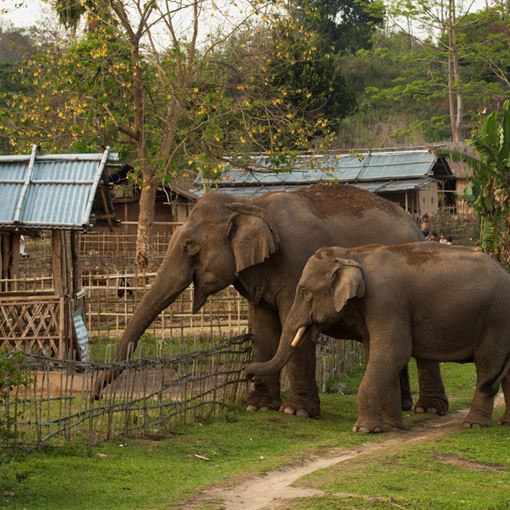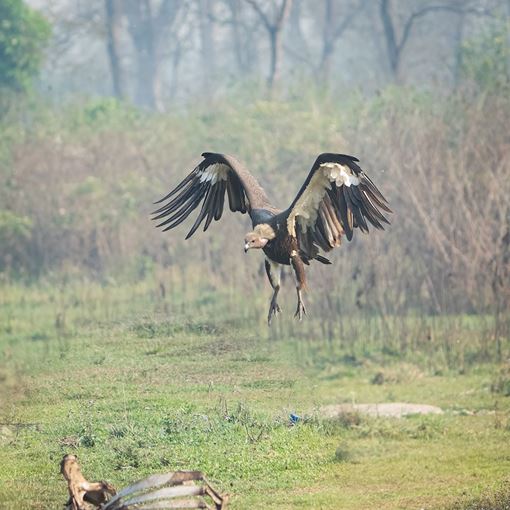Five Innovative Ways Tech is Boosting Conservation
The theme for World Wildlife Day 2024 was “Connecting People and Planet: Exploring Digital Innovation in Wildlife Conservation.”
Innovative initiatives are an essential part of our work in expanding and scaling routes for effective conservation in South Asia. This day is was opportunity to celebrate wildlife, and all the novel ways that our partners and other conservationists are leveraging technologies to protect it.
Here are five ways in which tech is boosting conservation efforts across South Asia.
1. Keeping an eye on key species
Camera traps are remote cameras that help track the populations and behaviours of key species, offering us a candid look into wildlife through images ranging from informative to hilarious.
From identifying leucism (a lack of pigmentation in the skin and fur) to tracking movement of leopards, our partners at the Holématthi Nature Foundation observe information that encourages further study of wildlife ecology and ecosystems and helps inform local policy.
Meanwhile, fellows from our Coexistence Fellowship Programme have recorded the presence of leopards and hyenas, as well as their interaction with the local community helping in the identification of areas that can be marked as wildlife corridors to connect habitats and can help prevent human-wildlife conflict (HWC) - crucial for enabling protection of migratory species which are declining in numbers.

2. Heads up, there’s an elephant!
Communication technologies like instant messaging services and apps are great for staying connected, but our partner Aaranyak in Assam and Meghalaya is doing more than forwarding the cutest elephant memes.
Working closely with villages affected by human-elephant conflict (HEC), Aaranyak has developed Rapid Response Units (RRUs) where community members can warn each other of elephant sightings in real-time.
Early warnings help people protect themselves by getting out of the way of approaching herds. The RRU members are also trained in monitoring elephant movements, so they can deliver accurate information to their communities on the dedicated WhatsApp group, allowing humans and elephants to share space without threatening the other.

3. Cues to leave
A person’s tone of voice can let us know if we should be walking on eggshells around them or asking for a favour.
Elephants also speak in a range of sounds - from trumpet calls to growls, to rumbles. Decoding what they are saying and feeling helps to mitigate HEC and enable humans and elephants to coexist in the same space without stepping on each other’s toes.
The Elephant Acoustics project, which we supported in its initial phases, is working to create an extensive database of elephant sounds to fully understand how Asian elephants communicate. What an innovative way to use tech for conservation.
4. Growing smarter forests
The urban development authority in Lahore, Pakistan is developing a smart forest with a digital system to ensure that it is in good health and protected from loggers. [iii]
The Rakh Johk forest is an urban forest that will be developed by planting 10 million specimens of native trees. Sensors will be built into the forest to monitor the health and growth of each individual tree. More intriguing are the noise sensors, which will be used to detect sounds of vehicles and deterring poachers and loggers from taking advantage of the new forest. Yes, the trees here have ears!
5. GPS trackers for vulture health
We’ve been using GPS to make sure we don’t get lost on our way to the grocery store, but conservationists are using it a little differently.
The Bangladesh Forest Department is working with IUCN Bangladesh to put satellite tags [iv] – transmitters that send out signals detected by satellites – on vultures. These tags allow conservationists to learn where vultures live and nest and use that information to identify threats to their survival. Real vulture culture, courtesy of tech.
These are just some of the ways that our partners and other conservationists are using technology to power conservation, and with advances in tech, we’re excited about reporting new and innovative ways in which we can use technology to help humans and wildlife thrive together.
For more information about our work and all things wildlife conservation, subscribe to our newsletter here.

[i] https://conbio.onlinelibrary.wiley.com/doi/10.1111/cobi.13871
[ii] https://www.unep.org/news-and-stories/press-release/landmark-un-report-worlds-migratory-species-animals-are-decline-and
[iii] https://gulfnews.com/world/asia/pakistan/pakistan-launches-first-smart-forest-to-conserve-nature-with-technology-1.81803292
[iv] https://save-vultures.org/2022/10/training-of-satellite-tagging-of-vultures-and-first-white-rumped-vulture-tagged-in-bangladesh/
By Caroline Abraham, Communications Officer - Conservation
